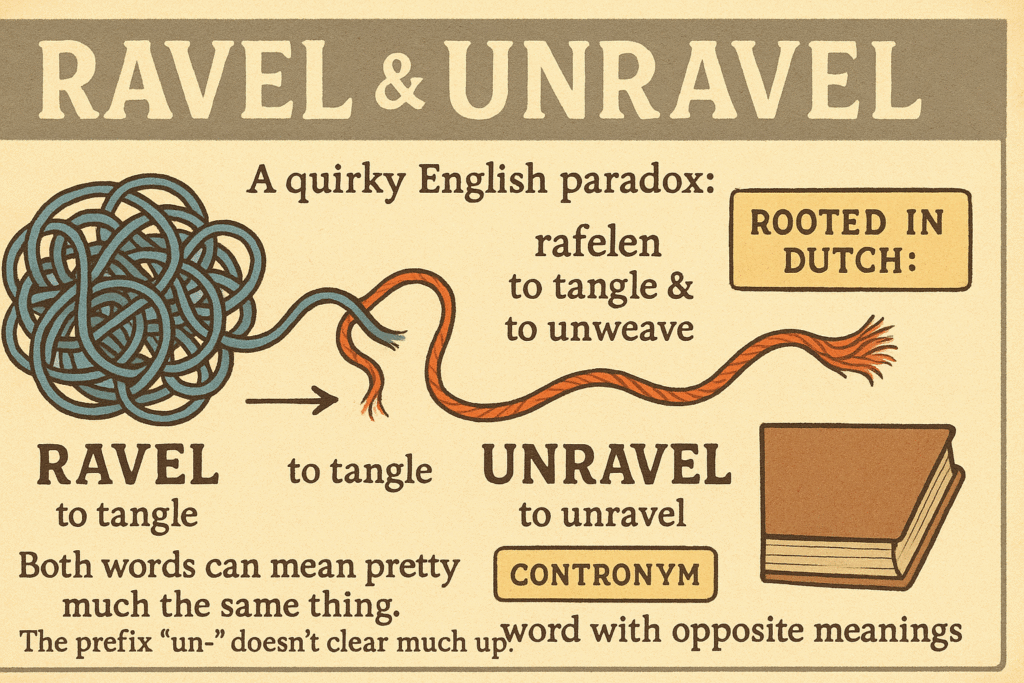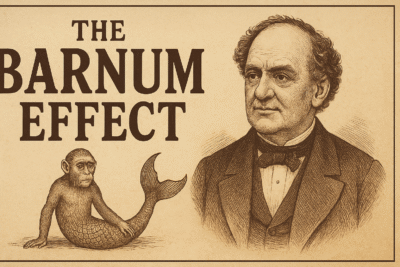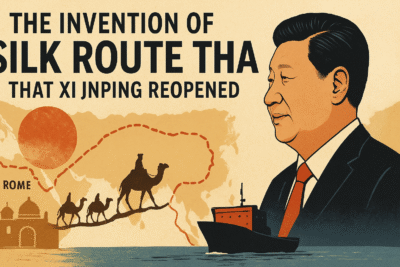
Here’s the fascinating tale behind this linguistic oddity:
Rooted in Dutch:
The story begins with the Dutch word rafelen, which carried an unusual double meaning: “to tangle” and also “to unweave” or “fray”.
When English borrowed this word back in the 16th century, it brought along both these conflicting meanings, setting the scene for confusion.
The tricky prefix “un-”:
You’d expect “unravel” to simply mean the opposite of “ravel” – to undo or reverse. But since “ravel” itself meant both “to tangle” and “to untangle,” adding “un-” didn’t clear things up much. Instead, it created another word with similarly mixed meanings.
It’s all about weaving:
This paradox actually makes perfect sense when you think about how fabrics come undone. When threads start to pull apart, they’re often at once “unwoven” and “entangled” in a mess of fibres – a perfect storm of meanings rolled into one.
Meet the contronym:
Words that are their own opposites are called “contronyms” or “auto-antonyms.” Other cheeky examples include “cleave,” which can mean either to cling tightly or to split apart, and “dust,” which famously means both to sprinkle and to clean away dust.
How we use them today:
While “ravel” might still crop up in older or more formal writing, these days most of us use “unravel” to mean “untangle,” “fray,” or even “solve a mystery.” The word “ravel” is now a bit of a relic outside certain crafts like knitting and crocheting.
English is full of surprises, and “ravel” versus “unravel” is one delightfully tangled example!





